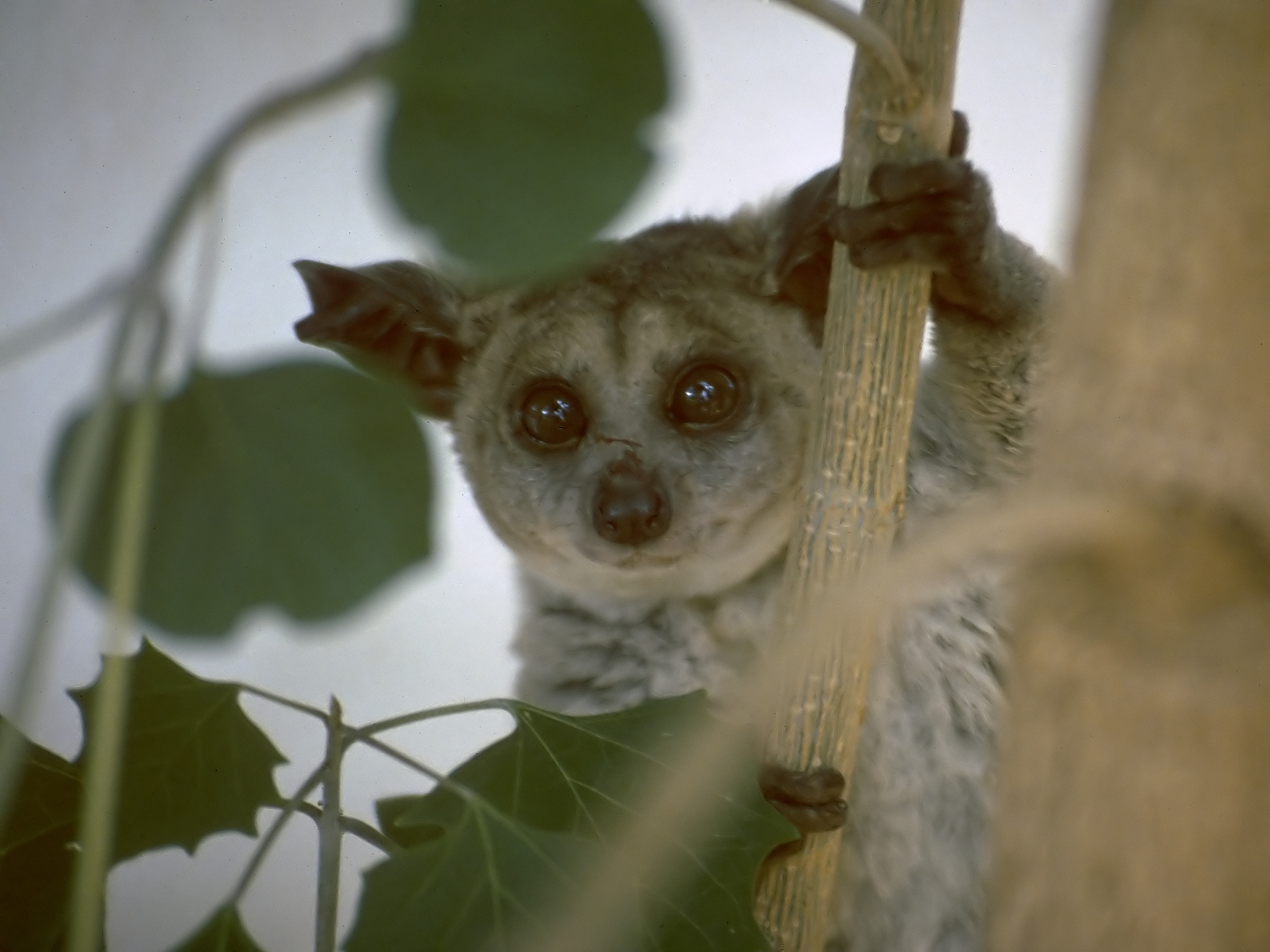- Brown Greater Galago
Taxobox
name = Brown Greater GalagoMSW3 Groves|pages=126]
status = LC
status_system = iucn3.1
status_ref = IUCN2006 | assessors = Butynski, T. & Members of the Primate Specialist Group | year = 2000 | title = Otolemur crassicaudatus | id = 15643 | downloaded =2006-11-20 ]

image_width = 225px
image_caption =
regnum =Animal ia
phylum = Chordata
classis =Mammal ia
ordo =Primate s
subordo =Strepsirrhini
infraordo =Lorisiformes
familia = Galagidae
genus = "Otolemur "
species = "O. crassicaudatus"
binomial = "Otolemur crassicaudatus"
binomial_authority = É Geoffroy, 1812The Brown Greater Galago ("Otolemur crassicaudatus") is a nocturnal
primate , the largest in the family ofgalago s.Physical characteristics
This species has a rounded head with a short, wide snout, very large ears and relatively small eyes. The thick fur is very variable in color: some have a grayish fur with a white tail tip, others a dark brown fur with a black tip. The lighter colored animals mainly occur in dryer, low-lying areas, while the darker animals live in higher, wetter territories.
The Brown Greater Galago has a head-body length of 26 to 47 cm (32 cm on average), a tail length of 29 to 55 cm, and a weight of 0.5 to 2 kg.
Distribution
It is a common species in Southern and
East Africa . The largest populations can be found inAngola ,Tanzania and southernKenya , and the coast ofSomalia .Behavior
The Brown Greater Galago is a nocturnal animal. During the day, it rests in a hollow tree or in dense vegetation. Its diet consists of fruit (like berries,
fig s),seed s,acacia gum, flowers,insect s,slug s,reptile s and small birds.The species live is small groups in a territory of a few hectares. The territory is marked by urine and a special flavouring that is produced in a
gland in the breast.References
Wikimedia Foundation. 2010.
